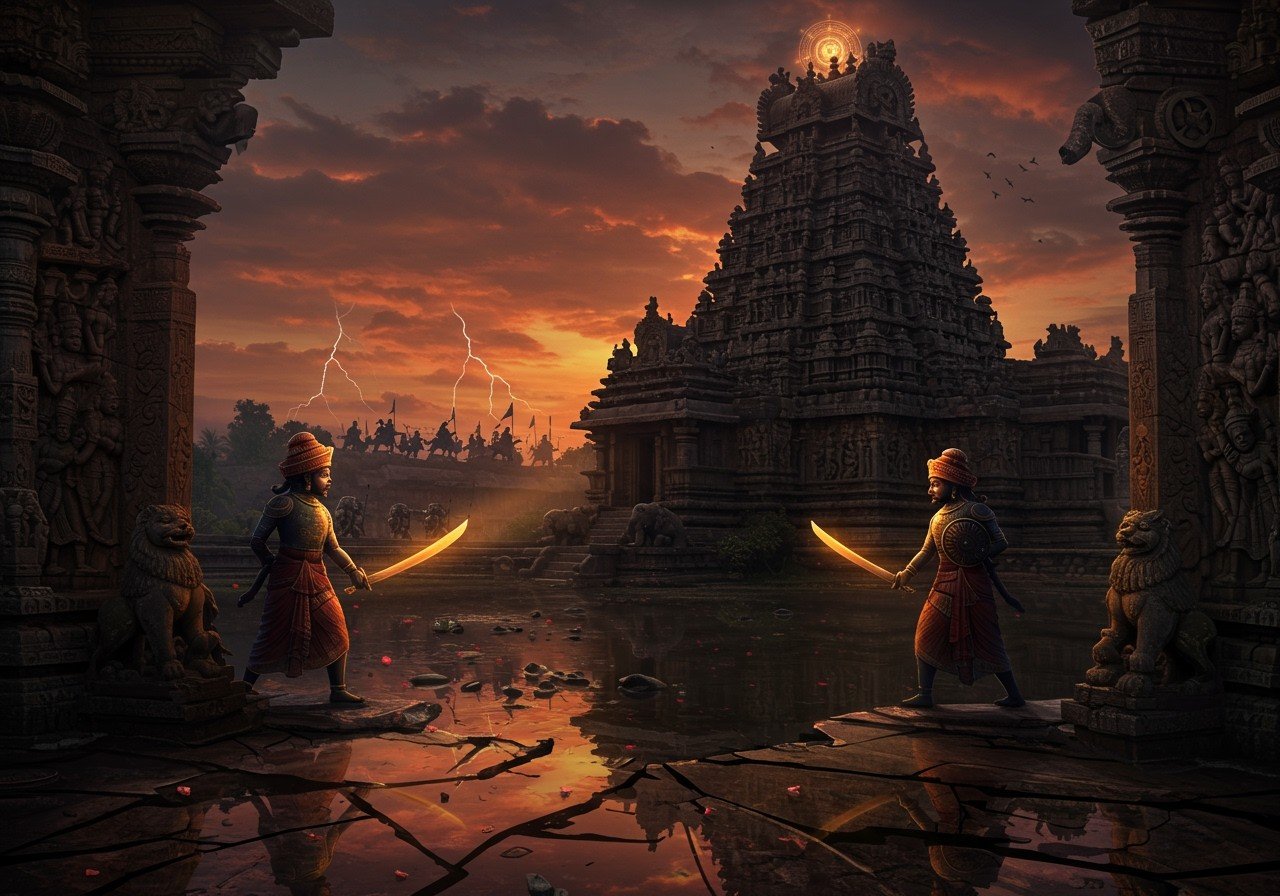
The Hoysala Empire, a prominent power in South India between the 10th and 14th centuries, left an indelible mark with its magnificent temples and unique cultural contributions. This article delves into the factors that led to the empire’s decline, focusing on internal conflicts and external threats. By understanding these elements, we gain valuable insights into the complex history of this fascinating empire and its enduring legacy.
Rise and Golden Age of the Hoysala Empire
The Hoysala Empire emerged around the 10th century in present-day Karnataka. Under rulers like Vishnuvardhana and Veera Ballala II, the empire experienced significant expansion. These kings were renowned patrons of art and culture.
Architectural Achievements
- The Hoysalas are famed for their breathtaking temples, particularly those in Belur (Bhoganandishwara Temple) and Halebidu. These architectural marvels showcase the empire’s sophisticated craftsmanship.
- The intricate carvings and sculptures adorning these temples exemplify the pinnacle of Hoysala artistry and architectural prowess. The detailed depictions of deities, dancers, and mythical creatures reflect the rich cultural and religious landscape of the time.
Contributions to Literature, Art, and Religion
- The Hoysala rulers generously supported poets, scholars, and artists, fostering a vibrant intellectual and creative atmosphere. This patronage led to the flourishing of Kannada literature and the development of distinct artistic styles.
- The Hoysalas nurtured the development of unique styles in sculpture and painting, evident in the intricate details of their temples and artwork. They embraced diverse religious practices, including Jainism and Hinduism, promoting religious tolerance and harmony.
Administrative Structure and Military Prowess
- An efficient administrative system enabled the Hoysalas to effectively manage their vast territories. This well-organized structure facilitated the collection of taxes, the maintenance of law and order, and the implementation of royal decrees.
- A strong military force played a crucial role in the empire’s expansion and defense against external threats. The Hoysala army was known for its skilled warriors and strategic alliances, allowing them to maintain their dominance in the region.
Internal Strife: Political and Succession Issues
Internal conflicts significantly weakened the Hoysala Empire, contributing to its eventual decline.
Succession Crises
- Power struggles among members of the royal family frequently disrupted the empire’s stability. These internal power struggles diverted resources and attention away from external threats and administrative matters.
- Disputes over succession led to periods of uncertainty and instability, weakening the central authority and creating opportunities for rebellions and external interventions.
External Threats: Invasions and Warfare
The Hoysala Empire faced constant pressure from neighboring kingdoms and invaders.
Delhi Sultanate Invasions
- Invasions by the Delhi Sultanate, particularly the campaigns led by Malik Kafur under Alauddin Khilji in the early 14th century, inflicted devastating blows to the Hoysala Empire. These attacks resulted in significant territorial losses and weakened the empire’s defenses.
- The repeated invasions depleted the empire’s resources and manpower, making it increasingly difficult to resist further attacks. The loss of key territories and the destruction caused by the invasions further destabilized the empire.
The Last King and the Fall of the Empire
Veera Ballala III, the last Hoysala king (1292-1343), made valiant attempts to revive the empire. However, he faced relentless invasions from the Delhi Sultanate. The empire also grappled with internal administrative challenges, including the division of power between two brothers, King Narasimha III and Ramanatha, which further weakened central authority.
In 1343 AD, the rising Vijayanagara Empire annexed the Hoysala territories, marking the end of Hoysala rule. Despite its downfall, the Hoysala Empire left behind a remarkable legacy of art and architecture, particularly its stunning temples, which continue to inspire awe and admiration today.
Legacy of the Hoysala Empire
Despite its decline, the Hoysalas left an enduring legacy. Their architectural marvels, particularly the temples of Belur (Bhoganandishwara Temple) and Halebidu, stand as testaments to their artistic achievements. Their contributions to literature, art, and religion enriched India’s cultural heritage.
Poojn.in offers a wide variety of products related to Indian culture and spirituality, including items related to Lord Shiva and Lord Indra. You can explore our collection at Shiva Lingam and Bel Mala.
FAQs on The Decline of the Hoysala Empire: Internal Conflicts & External Threats
Who was the last king of the Hoysala Empire? Veera Ballala III was the last Hoysala king, ruling from 1292 to approximately 1343.
What led to the internal conflicts within the Hoysala Empire? Internal conflicts arose from succession disputes, power struggles within the royal family, and rebellions by local chieftains.
How did external threats contribute to the decline of the Hoysala Empire? External threats included invasions by the Delhi Sultanate under Alauddin Khilji and the rise of neighboring kingdoms like the Vijayanagara Empire.
Are there any notable ruins of the Hoysala Empire? Yes, magnificent temples and sculptures can still be found in Halebidu and Belur, showcasing the empire’s architectural prowess. You can learn more about these sites on Poojn.in: Bhoganandishwara Temple Visit: Your Essential Guide and Bhoganandishwara Temple: Rituals and Traditions – Experiencing the Divine.
What is the timeline of the Hoysala Empire? The Hoysala Empire existed from approximately 1026 AD to 1343 AD.


